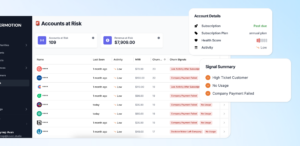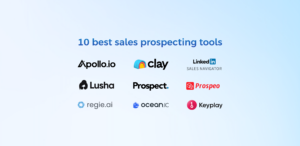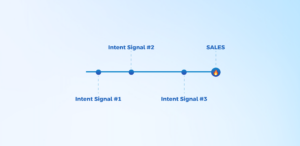Hello folks! We’re excited to show you the research report we’ve been working on for the past few months to understand how companies identify if a new user is a potential customer. We’ve run a survey and reached out to a range of SaaS companies to ask the big questions: “How to identify potential customers? What data do they consider? Which tools do they use? And what obstacles do they face in the process?”
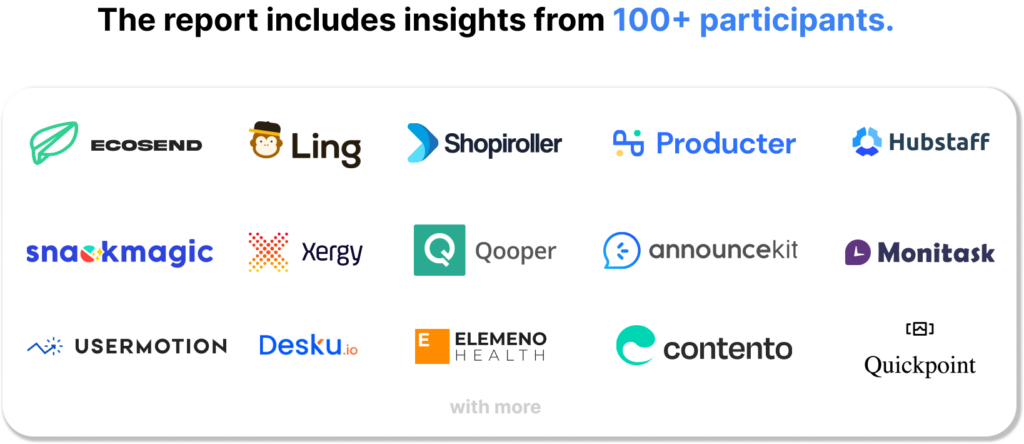
This report includes insights from 100+ experts from Ecosend, Ling, Shopiroller, Producter, Hubstaff, SnackMagic I SwagMagic, Proteus, Qooper, AnnounceKit, Monitask, Contento, Desku, Elemeno Health, QuickPoint and more.
Special thanks to Simon Bacher, Russell Vaughan, Arif Çağlar, Shaunak Amin, Ferhan Gül, Alan Gleeson, Diana Stepanova, Geoff Whiting, Lisa Crounse, Kuba Bajda, Omer Usanmaz, Gaurav Nagani, Liz Westendorf, Amy Dumas Pickles, and more for providing invaluable insights!
The point? To learn about the different insights, tricks, and methods that SaaS companies use for lead identification and conversion strategies.
We are now sharing all our findings with you in an easy-to-digest format. This report showcases real-world examples of how SaaS businesses process understanding their customers and prioritizing leads.
You can download the report here in PDF format
How does a business identify potential customers?
The majority of the responses emphasize the importance of various data points in identifying potential customers. These include:
Monitoring user behavior and engagement: Respondents commonly mentioned studying users’ engagement with the product features, browsing behavior, sign-up process, and interactions with their website’s different pages.
For instance, Arif Çağlar from Shopiroller mentioned monitoring the progression of users in the sales funnel, while Liz Westendorf from QuickPoint highlighted the value of tracking the number of site visits.
Fit with the Ideal Customer Profile (ICP): Several responses highlight the need to match new users with an existing ICP based on various criteria, such as demographics, company, and job title.
Kuba Bajda from AnnounceKit shared that they check their ideal customer profile (ICP) and look at factors like company industry, size, and geographical location. Amy Pickles from Xergy also suggested looking at the user’s company and job title to determine if they might be decision-makers.
Usage of data analytics tools: Respondents also suggest leveraging data analytics tools to enrich user information and monitor their behavior.
“Really, I think the only way to find out is with good data and analysis. When a new user signs up, you should enrich their information so you can check if they meet your ICP and then look at their behavioral data to see if they are a “product-qualified lead.” Russell Vaughan from EcoSend.
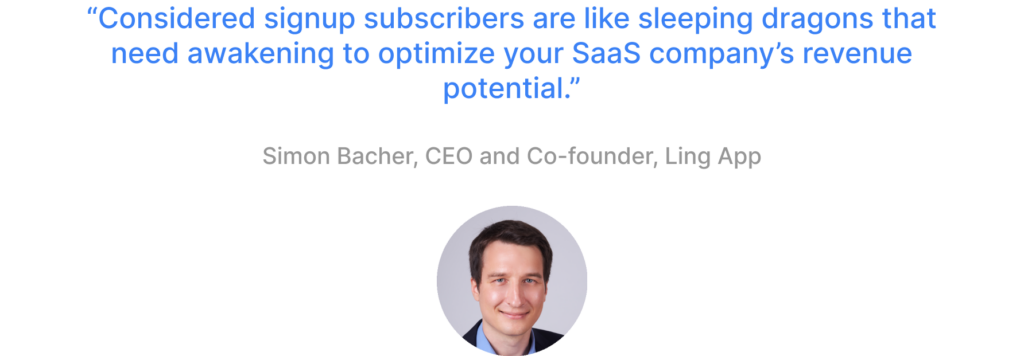
What data points do they think are important to identify potential customers??
Based on the responses gathered, here’s the analysis of the factors that respondents think are important when it comes to understanding if a user is a potential customer.
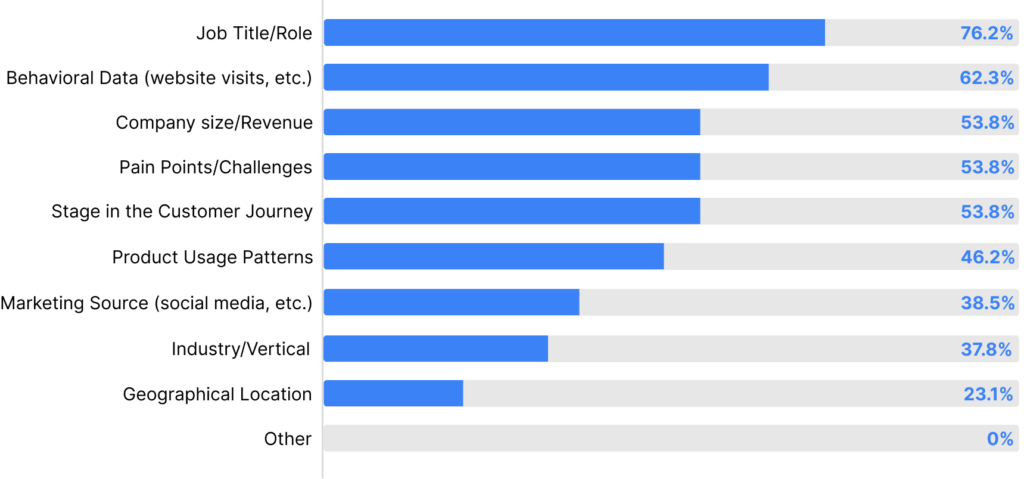
Job Title/Role (76.2%): The majority of the respondents believe that the job title or role of a user is crucial. This can help determine their decision-making capacity within their organization and whether they’re likely to need the product or service offered.
Behavioral Data (62.3%): Most of the respondents also consider behavioral data, such as website visits and email clicks, as important. Such data provides insights into user interest and engagement levels.
Company size/Revenue, Pain Points/Challenges, Stage in the Customer Journey (53.8% each): Half of the respondents consider these three factors important. The size and revenue of a company can indicate its purchasing power, pain points or challenges can show a potential need for the product or service, and the stage in the customer journey can provide an understanding of the user’s readiness to purchase.
Product Usage Patterns (46.2%): Almost half of the respondents believe monitoring how users interact with the product can identify potential customers.
Marketing Source (38.5%): Almost half of the respondents feel that the source from which the user was acquired can be useful. This may show which marketing channels are most effective at attracting potential customers.
Industry/Vertical (37.8%): 37% of the respondents suggest that a user’s industry or vertical is a significant factor, possibly because certain industries might have more need for the product or service.
Geographical Location (23.1%): Only 23% of respondents consider the user’s geographical location as important. This could be due to the global reach of many businesses and the ability to service customers regardless of location.
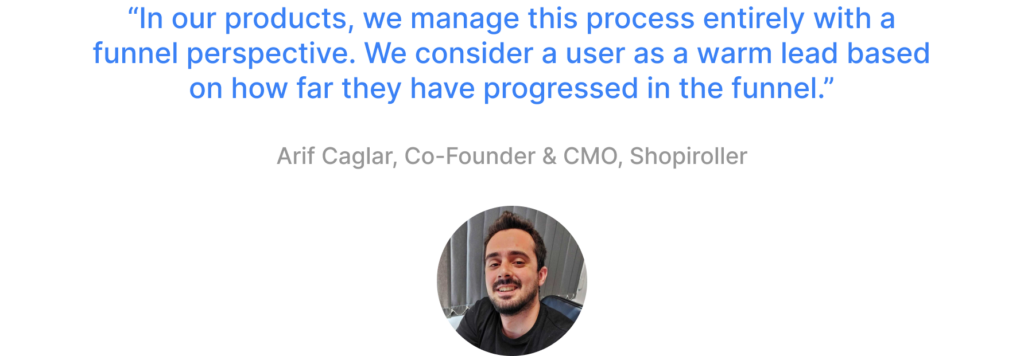
What do they use to get this kind of information?
Based on the responses collected, here’s an analysis of the tools and methods respondents use to get accurate and useful information for understanding if a user is a potential customer.
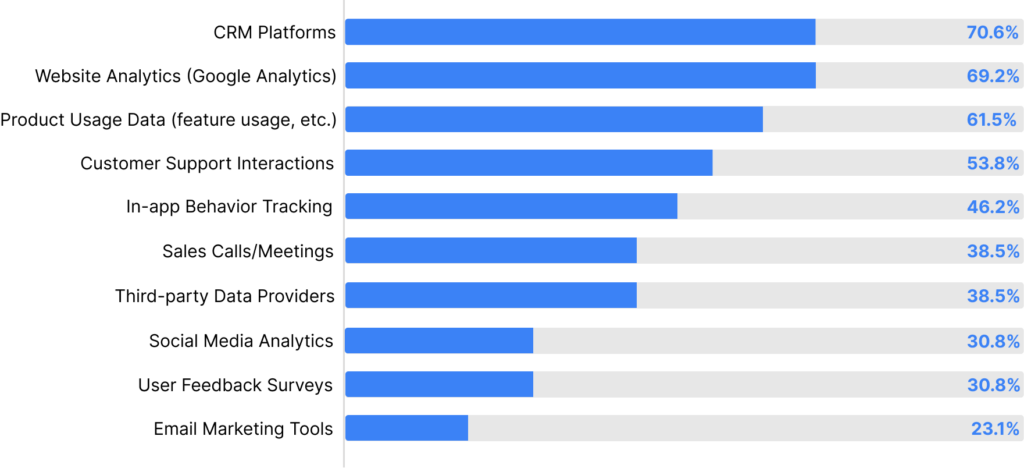
CRM Platforms and Website Analytics (70.6% each): Both of these tools were chosen by 90 out of 130 respondents, indicating their crucial role in customer understanding. CRM platforms provide a place for tracking customer interactions and data, while website analytics offer insights into user behavior on the website, both being invaluable for targeting potential customers.
Product Usage Data (61.5%): The majority of the respondents use product usage data, such as feature usage and session duration, to understand a user’s engagement with the product and identify their likelihood of becoming a potential customer.
Customer Support Interactions (53.8%): Half of the respondents use data from customer support interactions. This can provide insights into user challenges, needs, and overall satisfaction.
In-app Behavior Tracking (46.2%): 46% of the respondents utilize in-app behavior tracking. This tool is valuable for understanding how users interact with the product, what features they use, and how often they use them.
Sales Calls/Meetings and Third-party Data Providers (38.5% each): Sales calls/meetings and third-party data providers are used by almost 40% of the respondents each. Sales calls/meetings can provide direct feedback and indications of interest from the user, while third-party data providers can offer additional demographic and behavioral data.
Social Media Analytics and User Feedback Surveys (30.8% each): Both these methods are used by 30% of the respondents each. Social media analytics can show user engagement and sentiment, while user feedback surveys provide direct input on user experiences and needs.
Email Marketing Tools (23.1%): Only a small amount of the respondents use email marketing tools for this purpose. These tools can show user engagement and response to various marketing strategies.
What challenges do they encounter when understanding possible customers?
Based on the responses to the question, there are several commonalities.
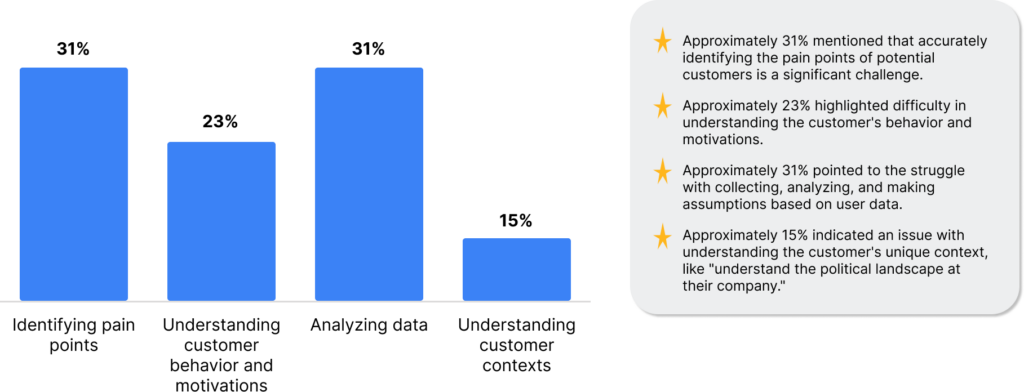
Identifying pain points: Many respondents mentioned that one of the significant challenges they face is accurately identifying the pain points of potential customers. This includes understanding their specific needs and the issues they are trying to solve. For example, Gaurav Nagani from Desku.io highlighted the challenge of “accurately identifying their pain points and anticipating their unique needs,” particularly given the diverse backgrounds and expectations of users.
Understanding customer behavior and motivations: Some respondents indicated difficulty in understanding the customer’s behavior, motivations, and the intent behind their actions.
Analyzing data: There’s a clear commonality around the struggle of collecting, analyzing, and making assumptions based on user data. When it comes to the complexity of data analysis, Alan Gleeson from Contento pointed out the challenge of “making assumptions on weak data,” while Geoff Whiting from Hubstaff spoke of the “time spent on analyzing different data points and combining them.”
Understanding customer contexts: Another common issue is understanding the customer’s unique context, like the political landscape within their company or their preconceived ideas about what they want. Ferhan Gül, Product Manager from Producter highlighted the challenge of “understanding non-target users who also start using the product.”
Extras
Insights from a Co-Founder and CEO

As a B2B business, it’s crucial to comprehend the primary roles within a buying center when scoring leads. This is because you’re not just targeting one specific customer but various individuals within a company’s buying center. These are the stakeholders who determine whether the company will purchase your product or service. This group includes those who first become aware of your offering, the end users, the buyers, decision-makers, and administrators.
Though this audience may seem complex, you can understand the unique needs of each member’s role using a customer profile matrix. From this, you can determine individual point values based on their importance and relevance to your sales process.
For instance, a buyer interested in downloading a cost analysis report may be assigned a higher point value than a user interested in a how-to guide. By considering different criteria, you can then accumulate the points to rank the leads. This approach enables your sales team to prioritize leads with the highest potential for conversion, streamlining your sales process.
Insights from an Operations Director

When trying to identify potential customers among new users in a SaaS environment, several strategies can be employed to filter high-value prospects effectively.
Implement Lead Scoring: Assign scores to new users based on their demographics, professional backgrounds, and other accessible data points. Continually update this score as they interact with your application, taking into account their feature usage, interactions, and support requests.
Analyze User Behavior: Conduct an in-depth analysis of how new users interact with your platform. Identify patterns that set potential customers apart from others, such as spending more time on specific features or showing an increased interest in your pricing plans.
Offer Customized Onboarding: Design personalized onboarding pathways that cater to users’ profiles, interests, and usage patterns. Monitor their responses to these tailor-made experiences and assess their likelihood of conversion. This will allow you to concentrate your sales efforts on those showing the most promise.
Monitor Trial Durations and Conversions: Users who make extensive use of your platform during their trial periods or who proactively reach out with queries are more likely to require your product to address a problem. Comparing the duration of their trial periods with conversion rates can reveal patterns that lead to successful conversions.
Engage in Email Marketing Automation: Segment your new users based on specific variables like their industry or behavioral patterns. Craft email nurture sequences that deliver value and engage them at a deeper level, thereby uncovering potentially profitable customers.
Insights from a Growth Product Manager

When you analyze data, you’re not just looking at numbers and statistics but also for useful insights that can help you make decisions and plan. This means knowing who the potential customers are, what their jobs might be, what motivates them, where they come from, and how they act.
For example, knowing how customers behave and what drives them can help you figure out the “why” behind things like how fast they convert or what they were trying to do with their first click. Businesses need to use the right tools and solutions to deal with these problems. By automating the process, these tools can make it easier and more accurate to collect and analyze data. Keeping track of what users do across different channels and touchpoints can also give more information about customer behavior and interests.
Data analysis is not a nice-to-have but a must-have for getting to know possible customers. It’s an important process that can lead to valuable insights, help make strategic choices, and ultimately help a business succeed. Because of this, it’s important for businesses to invest in the right tools and technologies to gather and analyze data well and to create a data-driven mindset that values and uses these insights.
Final Notes
⭐️ The information gathered from different SaaS companies showed a few key strategies. For example, a user’s job title or role and their behavior data are usually the most important factors when figuring out who their possible customers are. (But it is not enough to make sure your new user is your next customer.)
⭐️ These data-driven insights show how the industry is moving toward a more focused way of detecting potential customers. Businesses should learn a lot about their users and use a mix of firmographic, behavioral, and characteristic data to find possible customers.
⭐️ With the right tools and strategy planning, SaaS companies can speed up their lead qualification process and make sure they spend their time and money on users who are most likely to become paying customers.
Download the report in PDF format now!


